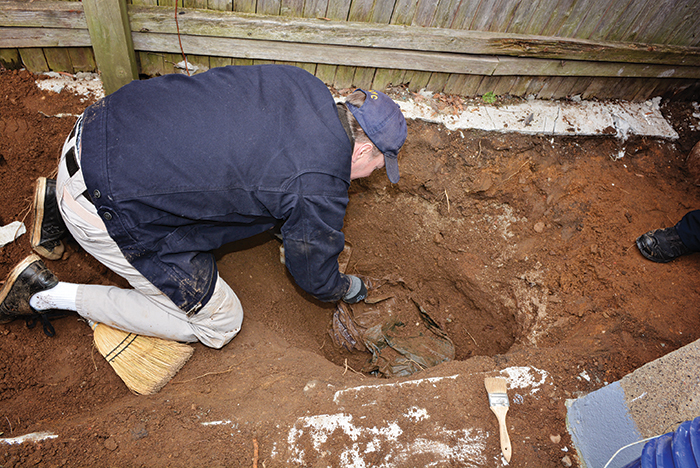File Photo
On March 12, 2019, human remains consisting of a pelvis and partial torso were discovered buried under concrete in the backyard of 87-72 115th St., in Richmond Hill.
By Forum Staff
Queens District Attorney Melinda Katz announced on Monday that Martin Motta has been sentenced to 20 years in prison for the 1976 killing of an 81-year-old World War I veteran.
The Queens District Attorney’s Office Cold Case Unit solved the 46-year-old homicide case with the NYPD using forensic genetic genealogy for the first time in New York City.
District Attorney Katz said, “After 46 years, a veteran of the First World War gets justice. The successes of modern technology and forensics made it possible for us to not only identify the bones of the victim but also to help find any witnesses. When I became District Attorney, I created the Cold Case Unit for cases such as this where time seems to be the enemy. Time allowed forensic genetic genealogy and our investigators to catch up to this defendant.”
Motta, 75, of Jamaica, was sentenced on Monday by Supreme Court Justice Kenneth Holder to 20 years in prison. Motta pleaded guilty to manslaughter in the first degree last month.
District Attorney Katz said the Office of the Chief Medical Examiner discovered human remains consisting of a pelvis and partial torso buried under a concrete slab in the backyard of 87-72 115th St., Richmond Hill, on March 12, 2019. A DNA profile retrieved from the remains could not identify the deceased man at the time in local, state or national databases.
The Queens DA’s Office and the NYPD sought the assistance of a private laboratory and the FBI to generate leads to the unknown victim’s identity. In February 2021, Othram Laboratories produced a comprehensive genealogical profile from the skeletal remains using advanced DNA testing. The genealogical profile was given to the FBI, which then generated leads that were turned over to the authorities. Investigators began to contact potential family members of the victim and obtained DNA samples for comparison to the discovered remains.
Through these combined efforts, investigators were able to confirm that the remains found were those of George Clarence Seitz, an 81-year-old veteran of World War I. Further investigation revealed that Seitz was last seen at approximately 10 a.m. on Dec. 10, 1976, leaving his home in Jamaica, reportedly on his way to get a haircut at defendant Martin Motta’s barbershop. After an extensive investigation, information was obtained that identified the victim as a regular customer of the barbershop and linked Motta to Seitz’s demise and its concealment.
An extensive investigation by the NYPD and the Queens DA’s Office included multiple interviews of witnesses and extensive records searches through five states and various agencies. Crucial evidence revealed the defendant fatally stabbed Seitz in the head after robbing him of approximately $7,000 to $8,000 then dismembered and buried his body beneath concrete slabs in the Richmond Hill backyard where it was uncovered 43 years later.
“No matter how much time has passed, we will use every tool at our disposal to achieve justice,” Katz added. “Now [Motta] is headed to prison thanks to the collaboration between the NYPD and our Cold Case Unit.”

